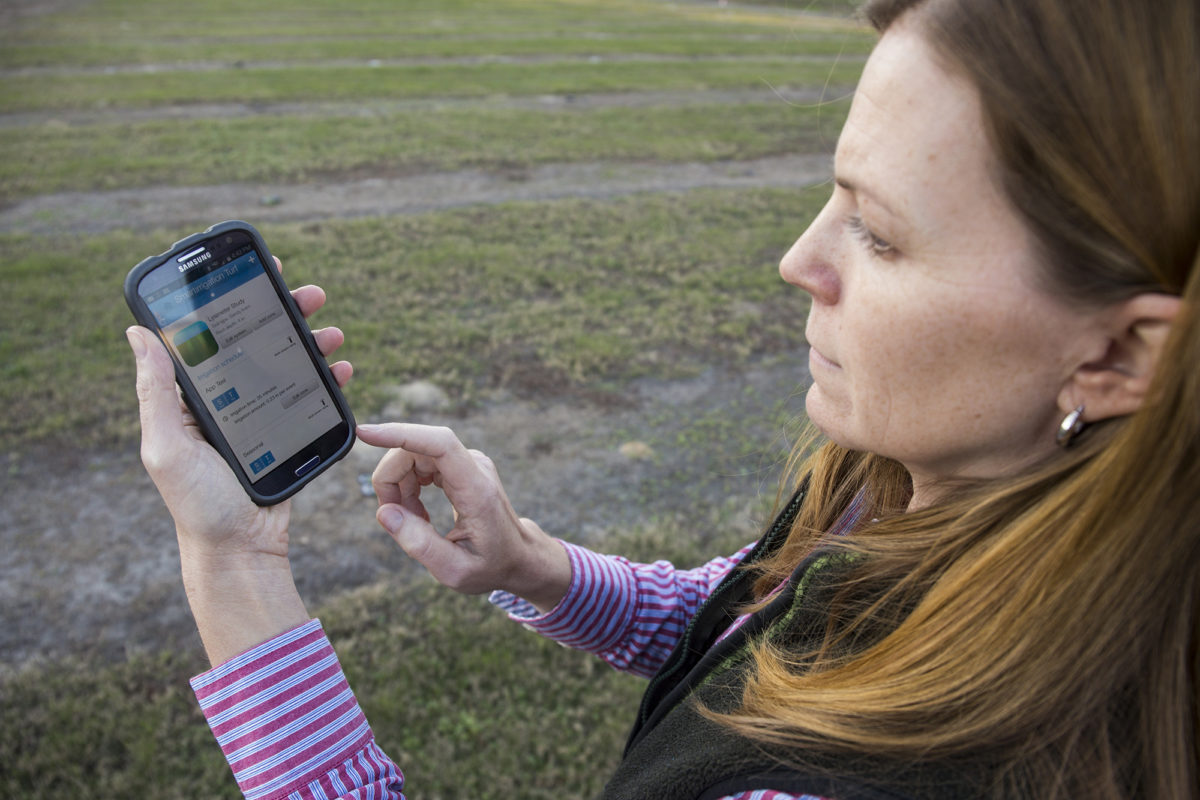By Breanna Kendrick
Some of the biggest advances in agricultural production happen due to technology.
Kati Migliaccio, professor and chair of the Agricultural and Biological Engineering (ABE) Department at the University of Florida, focuses on some of the technology used to improve crops and how it helps get food from the field to the table.
Engineers in the ABE department like Migliaccio work on processes and systems to optimize production and yield, as well as management of natural resources such as water, soil and nutrients.
“We look at how we can apply technology such as machine learning, drones, sensors, data management and models to optimize production,” explains Migliaccio. “We process data to gain information that we integrate into our decision making tools to determine how to make better decisions for those systems.”
New technology is beneficial to farmers because with the apps or drones they use, the data is processed behind the scenes, and then the information is given to the grower to make final decisions.
“Grower apps link to data sources, pull that data and create information that’s useful to the grower,” says Migliaccio. “Growers don’t need to know all the behind-the-scenes components to be able to use the information. As more data is available every day that can be used to help make decisions, such tools are becoming more common. Growers now have access to a very simple interface to get information they need. That is all handled by technology.”
New technologies will increase overall productivity over time because they can increase growers’ abilities to produce better crops with less resources, Migliaccio says. “If you were to look at inputs to grow a crop and the outputs from that investment, I think there will be a bigger return on that investment using the new tools that integrate technology.”
One of the clearest examples where this occurs is when a grower has a field with a lot of variability. How that field is managed with technology can help a grower get the most out of the field by providing what’s needed when it is needed to reach the optimal point. Technology can help optimize production with fewer resources.
Not only can the development of new technologies help growers make the best decisions, technology can reduce labor needs. However, Migliaccio notes that there’s always going to be a need for some real eyes on the production system as technology doesn’t replace all of human decision making needs.
“Our overall goal is to make sure growers have the best information they can possibly have to make a decision and to use resources in responsible ways,” says Migliaccio. “We want to be able to feed our nation, but we also want to do that in a responsible way that’s sustainable, and technology gives us a means to achieve that.”
Share this Post
Typical El Niño Winter Drenched Most of SE
April 19, 2024Strong Peach Season Expected for Alabama Growers
April 18, 2024Alabama Strawberry Disease Update
April 18, 2024Clemson Extension Agents Provide Crop Updates
April 18, 2024











